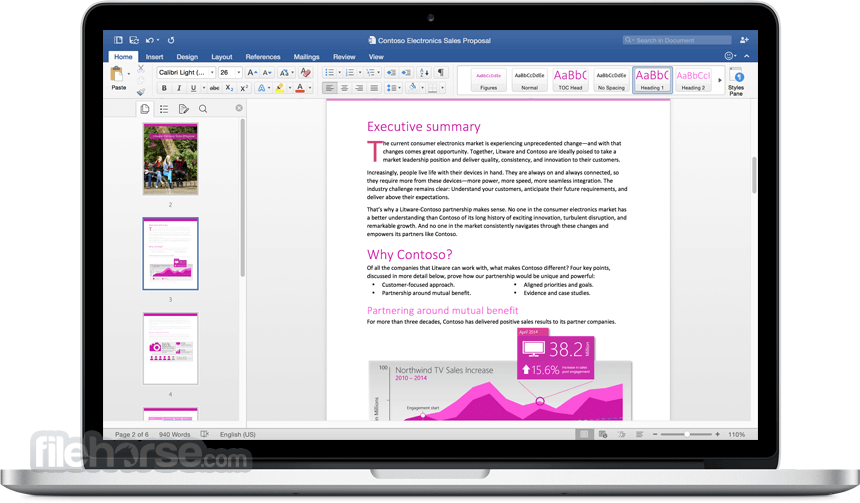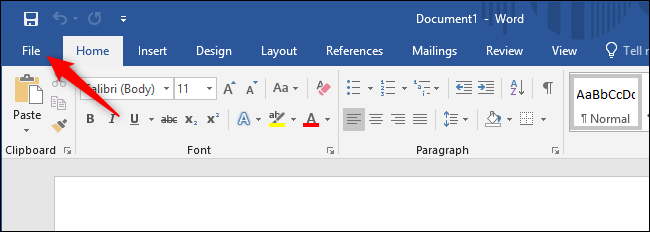
Your profile photo will now show, as seenįigure 8: Sign in to your Microsoft Account
#Office 2016 for mac change permission to open word document password#
Here you can enter your email address and password in successive screens. This brings up the Sign in window, shown inįigure 8, below. To sign in again, or to switch to another account, please click the Sign in button, as shown highlighted in Once you are signed out, the Account tab in Backstage view no longer shows your profile photo, as shown highlighted inįigure 7: Sign in to see your profile photo Do note that you will also end up signing out of all other Microsoft Office Up a message window, as shown in Figure 6, below.Ĭlick the Sign out button to sign out of PowerPoint. To sign out, choose the last option in the Account window, shown in Figure 2, previously on this page. Here, you can change the user name and initials. This brings up the User Information options, as shown in Figure 5, below. User Information icon, highlighted in red in Figure 4.įigure 4: PowerPoint Preferences dialog box This brings up the PowerPoint Preferences dialog box, as shown in Figure 4, below. To access User Information, select the PowerPoint menu option, and choose Preferences in the Within the Account window, you'll find several options, some of which you can see in Figure 2 above. The Account tab, which is the first option, as shown n Figure 1. The File icon (highlighted inīlue) is placed at the left extreme of the

To access Backstage view,Ĭlick the File icon, as shown in Figure 1, below. Open a presentation in PowerPoint 2016 for Mac. PowerPoint 2016 for Windows, but most options can be found elsewhere, as we will explore within this tutorial. The Account tab inīackstage view is not as full-featured as what you see within You typically do this by managing your Account, right inside PowerPoint or another Office 2016 program such as Word and Excel.

This will avoid any overwriting that may be occurring.In PowerPoint, and in other Office 2016 programs on the Mac, you typically need to sign in to a Microsoft Account so that you can access saved settings, customizations, and even some files off the cloud. If this is what is happening, the solution is to make sure that each person uses a new document name before copying his or her copy to the network drive. When done (with unresolved changes), the document is copied to the network drive, overwriting the "more done" copy that was stored there before. The second person works on his copy but doesn't resolve all the changes. One person gets done editing her copy, resolving all the changes, and then puts it into a network drive for the rest of the office to use. This could happen in a networked environment-perhaps two people have copies of the document and are essentially working on them at the same time. The second possibility in Kathryn's case is that the changes have truly been resolved, but that the document is being overwritten by an older version of the document.

The only reason to switch the view to "Final" is if you haven't resolved all the changes. Yet, there are no changes left because you've resolved them all. With that understanding, if you go through a document and resolve all the changes, there should be no need to change the view to "Final" as the only reason to use that view is to temporarily hide changes. If all of the changes are resolved, then there should be no difference between the two views ("Final Showing Markup" and "Final") because there is no longer any markup to show. When you turn it on, any edits you make are noted in the document as "markup." This markup is supposed to be visible on the screen, provided you are viewing the document as "Final Showing Markup." You can either temporarily hide the markup (change the view to "Final"), or you can get rid of the markup by resolving the changes (accept or reject them). Here is the way that Track Changes is supposed to work in Word. As a final step, she changes the view of the document to "Final" and saves it, but when the document is next opened, it has reverted to "Final Showing Markup"-and all the changes are back again. It seems that when a document has tracked changes, and those changes are eventually all accepted, that they don't really go away. Kathryn is experiencing a problem related to Word 2003's Track Changes feature.


 0 kommentar(er)
0 kommentar(er)
